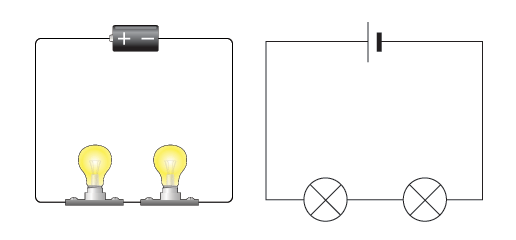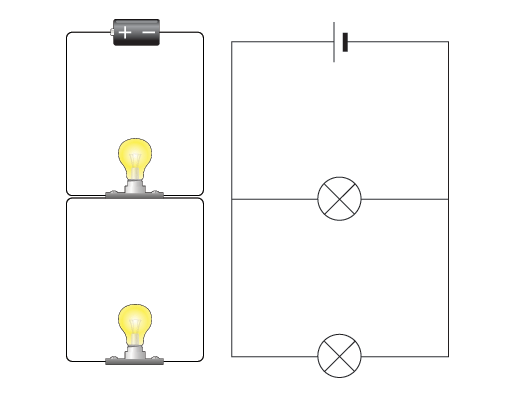Series and Parallel Circuits
Series Circuits
For current to flow there needs to be a complete path from the power source to the component and back again. In a series circuit there is only on loop or path.
In a series circuit, the current is the same at all points but the voltage is shared between the components. This means that if you put two bulbs in series with each other, they will be dimmer than if there was only one. If one of the bulbs break, the circuit will be broken and both will switch off.
In a series circuit, the current is the same at all points but the voltage is shared between the components. This means that if you put two bulbs in series with each other, they will be dimmer than if there was only one. If one of the bulbs break, the circuit will be broken and both will switch off.
Parallel Circuits
In a parallel circuit, there is more than one loop. When electrons reach the junction, they can travel one way or the other. Because of this the current splits at a junction but the total amount of current will stay the same. For example, in the circuit above, the 6A of electrons could be coming out of the cell, when they reach the junction, if the lamps are identical, 3A will travel down each path. There is still a total of 6A of current in the circuit. We do not lose any electrons.
When the electrons split, they have not lost any energy so there will be the same voltage in each of the loops. This means that the bulbs will be as bright as each other. If one breaks, the other will remain lit because there is still a complete path for the electrons to flow through.
When the electrons split, they have not lost any energy so there will be the same voltage in each of the loops. This means that the bulbs will be as bright as each other. If one breaks, the other will remain lit because there is still a complete path for the electrons to flow through.


